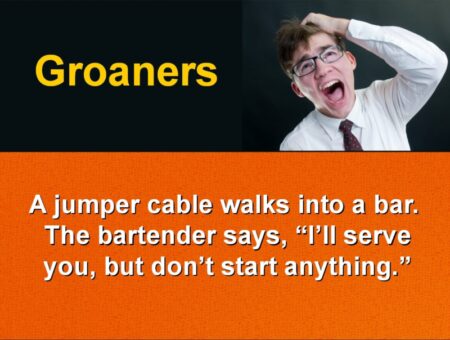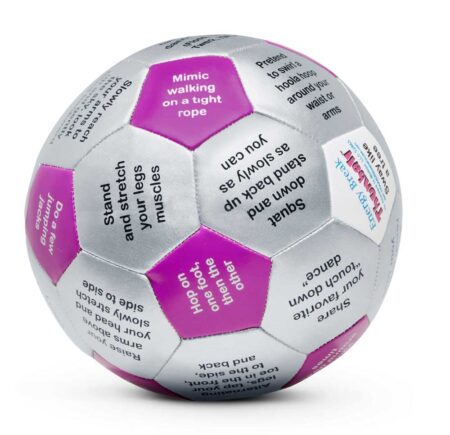Why Can’t Teachers be Funny in School? Encouraging Funny Classroom Activities
We were on vacation this summer and made plans to meet our friend Mike for a drink. Mike happens to be one of the funniest people I know. He’s also a high school math teacher at my sons’ school. Even though both of my boys have graduated from high school, they were dreading the prospect of this meet-up. How could I possibly schedule a drink with a teacher during their vacation? After our laughter-filled visit and goodbyes, Ted asked, “why can’t teachers be funny like that in school?” He had a good point. Classroom Humor is critical for memorable and enjoyable learning.
Teachers can and should integrate funny classroom activities into their learning days. Encouraged by John Spencer’s article, Five Ways Humor Boosts Creative Thinking in the Classroom, I gathered a few more fun classroom ideas and tips. So, rather than stripping away laughter and punishing “class clowns” for their distractions, try these approaches to harness the power of happiness and laughter.
As I write this, I smile, thinking about the quote I selected for my high school yearbook:
“Laughter is a form of internal jogging. It moves your internal organs around. It enhances respiration. It is an igniter of great expectations.” ~ Norman Cousins
I guess I’ve been pretty consistent over the years! Laughter, clowning, and now sharing tips on funny classroom activities and ways to make smiling and humor a regular part of your days in the classroom, learning centers, and offices.
Smile-ful introductions
Whether you’re introducing yourselves to one another or introducing a new topic, these silly approaches can add laughter and levity:
- Emojis & Gifs – have participants pick 3-5 emojis to use to introduce themselves. They can explain them on their own, or have others first guess what they might reflect.
- Favorite Meme – especially for younger groups, have them share a school-appropriate meme that made them laugh. Select one or more students to share each class, or use it as an introduction.
- Funny Voice intro – among your funny classroom activities, this one might feel a little silly, but that’s what classroom humor is about, right? If not the whole introduction, perhaps a funny-voice sign-off, “I’m glad to meet you.” “I look forward to learning today,” etc.
- Add wacky items to your agenda or to-do list – put together your agenda and explain that it seemed to have been highjacked. Add a few wacky items: i.e. light-saber practice / destroy distant planet / etc. — See if the group can figure out who hijacked your list. Get creative and have fun with it.
Content-Compatible Funny Classroom Activities
- Mad Lib – when introducing new material, write a quick paragraph or two about the topic. Replace some keywords with blanks and identify if they are nouns, verbs (action words), or adjectives (describing words). Have players read their paragraphs to each other for a few laughs, then teach them the real words.
- Limerick – create a limerick into which learners need to add the final rhyming word (in the style of NPR’s “Wait Wait Don’t Tell Me” program). Or challenge teams to come up with a limerick relating to the topic at hand. NOTE: Limericks are 5-line poems that follow the rhyme scheme: AABBA. Each “A” line usually has 9 syllables; each “B” line usually has 6 syllables. We gators catch prey every time/ and not just in mud and in slime / Thanks to Darwin’s advances / we hide up in branches / We gators have learned how to [climb].
- Improv Prop – improvisation is a great way to integrate funny classroom activities into your teaching. And, it doesn’t need to be complicated. Simply, use an item in the classroom for something completely different (improv game)
- Theme song – select a theme song for your content. Music is fun, but it can also help learners build lasting memories. They might think of the material every time they hear that song in the future.
- Cartoon Caption – choose an illustration pertinent to your content. Have teams come up with a funny caption for the image.
- Spot my Mistakes – add a stray bullet point with off-topic content (maybe a to-do item of your own, i.e. get toilet paper; finish binging on Psych…)
- Role Reversal – have the student be the teacher – if they imitate you, laugh and tell them if they got you right! Be able to laugh at yourself!

Punchlines & Groaners $5.95 BUY NOW
Just for Laughs, Chuckles, or Groans
Sometimes you just need to get a laugh to break the tension and get the blood flowing. As a former clown, our motto was, “go in, get the laugh, get out.” These are quick one-two punches to get your group smiling:
- 1-Minute of Laughter – Just start laughing and ask people to join you. After a while, nobody will be able to resist laughing.
- Toss around a Rubber Chicken and ask why it crossed the road. Sometimes the lamest funny classroom activities will still draw a laugh.
- Pretend to trip and fall – cross one foot in front of the other and pretend to trip. If you really want to ham it up, you can add a fall or even a somersault.
- Be real – self-deprecating remarks in there right from the start and students will know you’re for real
- Pretend to walk into a window or door frame – this is one of my favorite clown pranks and can still be a playful addition to your classroom humor routine.
- Drag toilet paper from your shoe – go ahead and do it on purpose!
- Wear something wacky – do something different with your hair, wear clothes that don’t match, or don two different shoes. Pretend you don’t notice.
Laughter Breaks for Classroom Humor
Taking a laughter break may be one of the easiest funny classroom activities to implement. Try these:
- Meme-Moment – share favorite funny (appropriate) memes
- Bubble Gum Contest – although gum is prohibited in many schools, make an exception for a bubble contest.
- Whistle Contest – find the loudest whistler, or see if someone can guess the song you’re trying to whistle.
- Make some noise – let out a bit of energy by asking your group to make some noise (yell, cheer, growl, clap). Try it clown-style, pitting half the room against the other half to see which team can be loudest.
- Get someone’s attention – try a variety of ways – yoo-hoo, ahem, yo, hey, whistle, boo…
- Punchlines & Groaners / Tell a Joke – share one of your own favorites; ask the group to share a joke, or use one from Punchlines and Groaners. This assortment of Tongue Twisters, Jokes, Riddles, Knock-Knocks, and Visual Funnies offer ready-to-use content. Some are bad “dad jokes,” but they’re sure to elicit a few smiles and chuckles.

Energy Break Thumball $32.95BUY NOW
Get the Blood Flowing – Indoor Recess
Other easy-to-implement, funny classroom activities involve physical movement. These are beneficial because they 1) stimulate an emotional response, and 2) circulate blood (full of oxygen and nutrients) through your learners’ bodies.
- Strike a Pose – ask the group to stand and stretch for a few minutes. In the middle, ask them to “Freeze.” Then, release the poses and have them freeze again in another pose. You might alternatively prompt them to “stand like a superhero,” “power pose,” “strike a yoga pose,” “stand on one leg,” etc.
- Ministry of Funny Walks – remember Monty Python’s Ministry of Funny Walks? Take a physical break and ask your group to do a lap around the room with their favorite funny walk.
- 2-Minute Dance Party – play a dance tune and start jamming. In “fan cam” style (like fans at sports games), give an award to the “best show.” Awards can be anything from a Token of Appreciation to a Scratch Card.
- Energy Break – get the blood flowing with an active movement of your own choosing (i.e. run in place, sway like a tree, pretend to swirl a hula hoop around your torso or arms) or toss an Energy Break Thumball for a random energy break activity.
Funny Prompts
Not sure you’re ready for these sorts of fun classroom ideas activities? You can still bring on a few smiles and laughter, by make humor a topic of discussion. Ask your participants what makes them laugh and smile. Try one or more of these “funniest” conversation prompts:
- What’s the funniest FOOD you’ve eaten?
- What’s the funniest OBJECT IN YOUR HOUSE you can think of?
- What’s the funniest SHOW YOU WATCH?
- Who’s the funniest PERSON in your family?
- Who’s the funniest ACTOR you can think of?
- What’s the funniest EXCUSE for not doing homework?
- What’s the funniest (or most fun) GAME you played as a kid?
- What’s the funniest (not dirty) JOKE you remember?
- What’s the funniest FOOD you’ve seen advertised?
- What do you do to make your sibling (or best friend) laugh/smile?
Embracing Classroom Humor
Laughter and smiling have been shown to have huge benefits — from stress reduction and improved health to longevity and job effectiveness. When deciding whether to open yourself to the “risk” of uncontrollable laughter, consider the health benefits of laughter, including:
- Increased endorphins
- Decreased stress
- Improved heart health
- Increased pain tolerance
- Strengthened immune system
- Boosted moods
- Greater interpersonal bonding
We also know that learning is both more enjoyable and more memorable if learners are happy and engaged. So, go ahead and bring some classroom humor to your learning environment.
Read More on Classroom Humor
Learning from Mistakes, Bloopers, and Outtakes
Fascinating Facts about Smiling
Bring Laughter into the Classroom

